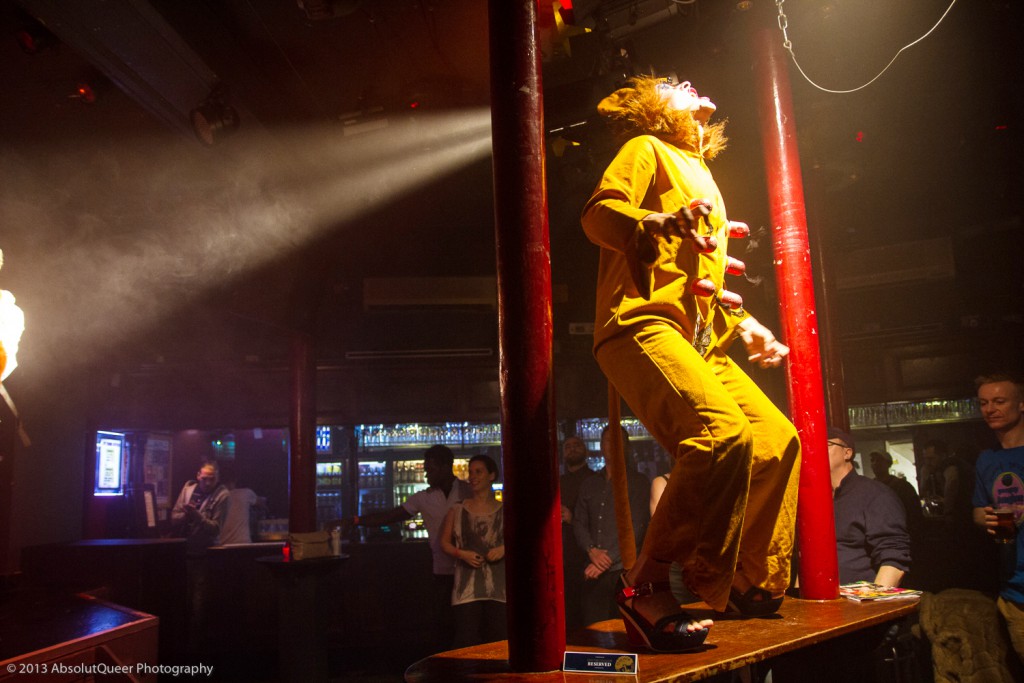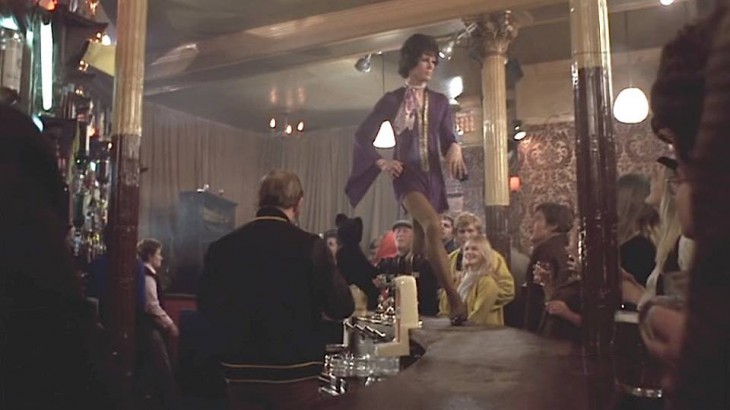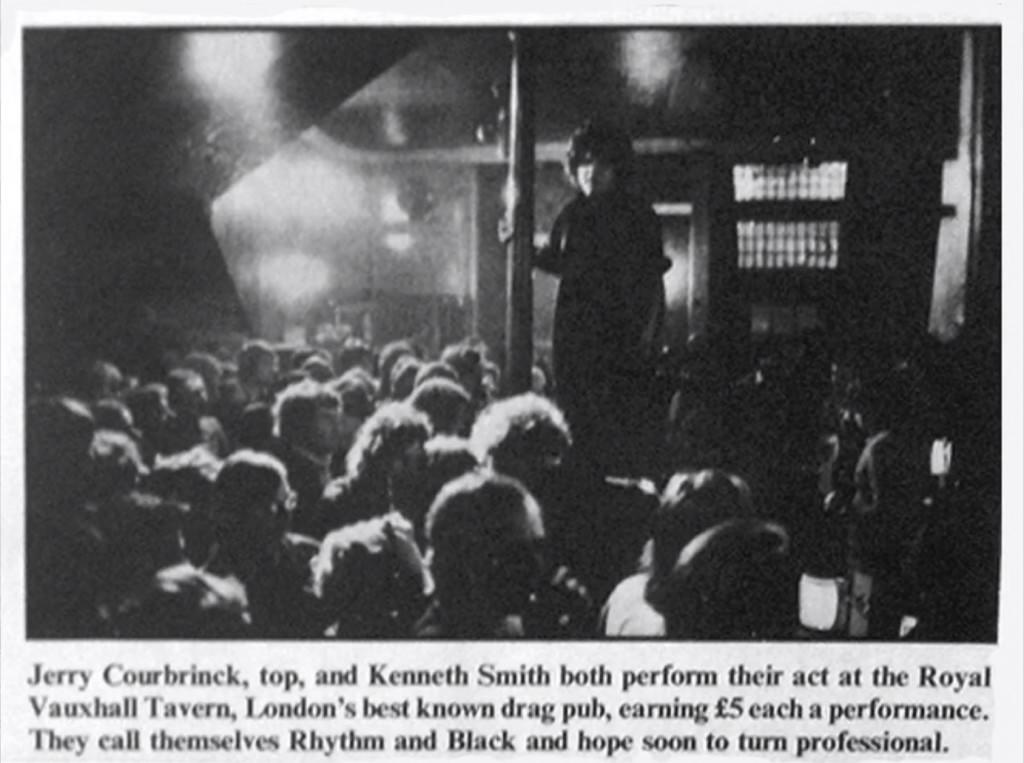RVT Future’s brilliant comic series by Baz, TALES OF THE TAVERN, continues with a glamorous and messy cautionary tale from 1956.
You can read the comic here, but if you’re curious about the real-life story behind it – and the deeper history behind that – then read on…
For devotees of the Royal Vauxhall Tavern today, it’s hard to imagine the pub without its iconic stage. The curtains might have seen better days but there’s nowhere else in town that brings performers and audiences together in quite the same way.
But it wasn’t always like that. The stage we know and love was part of a major refurbishment of the venue that took place around 1980. Before then, the Tavern did have a stage but it was small and tucked away in the corner.
The real spectacle took place somewhere else: on the bar.
The Tavern’s old bar was created around 1896 – about 35 years into the pub’s life – as part of an ornate makeover by noted architect R.A. Lewcock, incorporating the venue’s iconic metal columns.
At first a handsome decorative feature, the bar would become renowned as one of the capital’s most vibrant platforms for drag. There was also a swing that adventurous acts could use in conjunction with the bar.
Bette Bourne, founder of pioneering drag theatre company Bloolips, used to go to the Tavern in the 50s. The bar, Bourne recalls, “was about two feet wide and curved like a yellow brick road. It followed the pillars round and all the drag queens would come off the stage at the back because the bar was sort of in the middle and they’d run around saying, ‘Ere we come!’ And you’d have to get your drinks off quickly otherwise they got smashed.”
The bar was also special because it was something shared by all three of the Tavern’s interior zones, otherwise separated by glass screens. The gay area was the most popular – and raucous – part of the RVT but it remained a mixed pub, with areas for straight clientele too, and lots of mixing in between. At times, the Tavern was as much like an all-welcoming neighbourhood local as a venue dictated by sexuality. So plenty of straight punters had the benefit of the drag shows as well as the queers.
In fact, the late 60s saw something of a mainstream drag boom, reflected in the fact that RVT bar-top performances featured prominently in the ITV documentary What’s a Girl Like You (1969) and the film Goodbye Gemini (1970).
The bar itself bit the dust with the major refurbishment that unified the pub into a single space with the now-familiar stage. But the sweep of Lewcock’s bar was retained in modified form, with small bar ‘islands’ attached to the iconic columns at waist height.
These are sometimes used by performers to this day, along with the swing that has also remained. As today’s fans of the LipSinkers will attest, there are still moments during a show when you’d be well advised to watch your pint.

Blanche Dubois of the LipSinkers using one of the modern bar islands
See Baz’s comic about 1956 – and the rest of our Tales from the Tavern – here.
And read more about the RVT’s unique history here.

